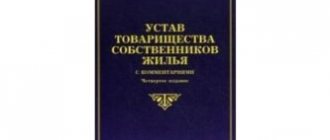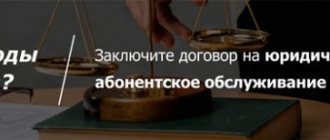The essence of free use of property
An agreement for the gratuitous use of property between individuals or organizations is an agreement documenting the process of transferring property for temporary use. The second name of the document: loan agreement.
The procedure should not be confused with donating a specific object. The difference between them lies in several factors:
We advise you to read:
- ✅ Agreement for free use of residential premises
- ✅ Sample agreement for the free use of non-residential premises in 2020
- ✅ Sample property trust management agreement
- ✅ Title documents for the land plot
- When concluding a use agreement, there is no transfer of ownership rights. And in case of gratuitous transfer, the property passes to the new owner. Therefore, the second name of such an agreement is a gift agreement.
- The loan does not require payment of VAT. In the case of a gift, VAT is paid by the previous owner of the property.
- The free use agreement does not imply profit. On the other hand, when making a gift, the recipient of the property acquires non-operating profit.
- Property tax payments. In the case of a loan, this obligation is imposed on the transferor, and in the case of a gift, on the recipient.
The main thing to remember is that with gratuitous use, the property is transferred for a time, with return. Donations are always final.
When is a contract necessary?
There are a number of situations in which the use of a loan agreement is necessary:
- Transfer of residential or non-residential real estate for temporary use.
- Issuance of a car or other transport to the borrower.
- Free donation of small items - books, clothes, shoes, etc.
- Temporary use by the borrower of certain technical equipment.
Each option should be considered in detail.
Use of housing on a temporary basis
The classic situation is that the owner of an apartment allows relatives to temporarily live in his home. But he draws up an agreement in advance for the free use of real estate. This allows him not to risk his property. If the apartment has furniture, an inventory of all things is compiled. Here you can draw up the document yourself, or use a ready-made property inventory form.
Attempting to collect rent would be a serious violation of the law. Residents may contact the police, and the property owner will be in serious trouble.
Therefore, it is not recommended to avoid taxes by drafting a fake real estate loan agreement. During the validity period of the contract, such schemes are unacceptable.
Temporary use of non-residential real estate
This method is used by many business owners. For example, you need premises for work, but managers are afraid to transfer it into the ownership of the company. In the event of bankruptcy, the owner does not want to lose valuable real estate.
For this purpose, a valid agreement on temporary transfer of property is drawn up. The lender and the borrower may, in fact, be the same person.
The described method allows you to profitably own real estate without the risk of losing it due to an unstable economic situation. What is also important is that all property taxes during the period of the agreement are levied on the company, which allows the main owner to save on payments.
Temporary use of a vehicle
There are two options that are used most often. The first option: a car loan to a company by its owner. Goal: no risk of loss of property in the event of bankruptcy of an enterprise.
During the agreement, the company pays annual fees for the vehicle, carries out maintenance, and uses it at its discretion. But ownership is assigned to the main owner of the car, the lender.
In the second case, the borrower is a current employee of the organization. And the lender here is the company itself. In such a case, the employee becomes responsible for the car. During the period of validity of the contract, he must deal with repairs, refueling, and paying bills for the vehicle. But the right of ownership does not pass to him.
Temporary use of equipment
In some cases, partner organizations enter into an agreement for the free use of equipment. For the duration of the agreement, the lender transfers the equipment for its use on a temporary basis. And the borrower undertakes to maintain the received equipment and operate it properly. The parties usually draw up an inventory of property as an appendix to the agreement.
In such cases, several responsible persons are often appointed to service the operating units of the received equipment. And the agreement itself usually indicates the terms of use of the objects of the agreement. Although in a number of situations the parties prefer an indefinite validity of the agreement.
Temporary use of small movable property
The subject of a contract for gratuitous use may be small-sized items that do not have a high price. Example: getting books from the library. Citizens receive a book in their hands for a certain period of time, with the condition of returning it safe and sound. In many cases, the library does not receive any profit from the loan of property. In this case, the persons receiving the books undertake certain obligations.
It should be noted: in the case of a library, essentially a written agreement is concluded on the free use of property. Each visitor, picking up books for the chosen period, signs for their receipt. In fact, he confirms receipt of the property and enters into an agreement with the library administration. Therefore, the institution itself is the lender, and the citizens who receive the books are the borrowers.
Final provisions
8.1. The Agreement comes into force from the moment it is signed by the Parties.
8.2. Unless otherwise provided by the Agreement, the Parties may send notices and other legally significant messages by fax, e-mail or other method of communication, provided that it allows one to reliably determine who the message came from and to whom it was addressed.
8.3. The Agreement is drawn up in two copies , one for each of the Parties.
8.4. to the Agreement:
- list of transferred property (Appendix No. 1);
- act of acceptance and transfer of movable property (Appendix No. 2);
- act of return of movable property (Appendix No. 3);
- ________________________________.
Addresses and payment details are filled in at the end of the agreement on the last page. Where the name of legal entities, location, TIN/KPP, OGRN, etc. are indicated.
Procedure for drawing up an agreement
The current legislation does not specify the rules for filling out the agreement form for the gratuitous use of property. The main requirement is the availability of all the necessary information about the transaction being performed.
When drawing up an agreement for the gratuitous use of property, a simple written form is used, in accordance with Article 161 of the Civil Code of the Russian Federation.
The agreement for the gratuitous use of property must contain the following clauses:
- List of parties to the agreement;
- Description of the subject of the agreement;
- Responsibilities of the lender and borrower;
- Responsibility for failure to fulfill obligations;
- Terms and principles of termination of the agreement;
- Risks and interference of force majeure circumstances, actions in case of force majeure;
- Conclusion. Here are the main provisions relating to the contract as a whole: number of copies, confidentiality, transfer of rights and obligations, etc.
Please note that the sequence of items and the type of information provided may vary. The main requirement when filling out: follow the spelling rules, indicate all the necessary names and details, write without erasing. You can fill out the document on a computer or manually.
Beginning of the document
The document begins with a title. Standard option: “Agreement for free use of property.” Then the locality and date of drawing up the agreement are indicated. The first paragraph lists the individuals or legal entities that entered into the agreement.
The terms “Lender” and “Borrowee” must be used in the agreement. This is what the parties to the contract are called.
In the case of organizations, the persons responsible for signing the agreement must be indicated. Information about the position and full name (full name) is provided. In the case of individuals - name and ID number. It is advisable to indicate your citizenship.
If necessary, the details of the parties are indicated. For legal entities: address of the main office, all working details (BIC, OKPO, etc.), current account. For individuals - registration and residence address (if different), TIN. Contact information must be listed: telephone numbers, email addresses, etc.
Subject of the agreement
In this paragraph it is necessary to describe the subject of the current agreement. It is indicated that the property belongs to the person who is the lender based on the right of ownership.
It is necessary to provide a detailed description of the item - appearance, license plates, date and place of production, etc. Without an appropriate description, this contract is considered invalid.
If there are several items of the contract for gratuitous use, then they are presented in the form of a list, with a detailed description of each item.
The purpose of use of the property must be indicated in this paragraph. The person who is the borrower must write down why he needs the relevant property: entrepreneurship, training, other needs. In the latter case, it is recommended to write “for personal purposes.”
Rights and obligations of the parties
Responsibilities are specified separately for the borrower and the lender. Accepted obligations cannot be transferred to third parties. Full responsibility lies with the person who participated in the conclusion of the transaction.
The lender's responsibilities are as follows:
- Timely transfer of property. The lender must hand over the subject matter of the agreement at the same time as signing the agreement. If the transfer is not carried out immediately, then its deadlines are set separately.
- Operational condition. Ensure the proper condition of the transferred property. It is necessary that the item can be used for the purposes of the borrower.
- Documentation. If there is a package of documents for the subject of the agreement, it is also transferred to the person who is the borrower.
The list of responsibilities of the borrower is different:
- Intended use. The purpose and principles of use are indicated separately.
- Safety.
- Operating costs. Under the agreement, the borrower undertakes to maintain and repair the received property. Any changes related to the property must be agreed with the lender.
- Timely return. For unlimited use, no specific terms are specified.
The rights of the parties always include the possibility of premature withdrawal from the agreement, subject to prior notification. The notice period is indicated in the same paragraph.
Responsibility of the parties
Failure to fulfill the terms of the agreement entails administrative liability by the parties to the transaction. In some cases, criminal liability is applied. Example: theft of property by the borrower. The applicable articles of the Code of Administrative Offenses and the Criminal Code of the Russian Federation depend on the specific situation.
When transferring property for a certain period of time, a late payment penalty is charged. The amount of the penalty is indicated separately. It is obliged to be paid by the borrower in favor of the lender. The standard option for calculating penalties is as a percentage of the value of the property used.
Validity period and termination procedure
The start and end dates of the agreement are indicated. With an open-ended contract, it is necessary to indicate that it is valid until one or both parties decide to withdraw from the agreement. Omission of this paragraph makes the document invalid.
With mutual consent of the parties, early termination is allowed without additional conditions.
Unilateral termination is permitted if the parties violate their obligations. If the borrower terminates the agreement, he is obliged to return the property himself. If the initiative comes from the borrower, then the responsibility to pick up the property falls on him. Return deadlines are specified for each party.
The contract for gratuitous use is automatically terminated upon death (for an individual) or liquidation (for an organization) of one of the parties.
Risk of accidental property damage
This paragraph lists possible risks associated with property damage and appropriate actions. In a standard situation, the borrower is obliged to pay the cost of the damaged property. It is possible that a penalty will be charged or the amount may be reduced due to natural wear and tear of the equipment.
In the event of force majeure, the parties are not liable to each other. That is, if they were unable to fulfill the agreement due to force majeure circumstances, there will be no punishment for violating their obligations.
Final provisions
In conclusion, the following points are listed:
- Number of copies of the document.
- Legal successors and trustees of the parties to the agreement.
- Addresses for receiving notices and documents related to the free use agreement. For individuals, this is the registration address; for legal entities, this is the address of the central branch or main office.
- Principles for notifying the lender and borrower about the fact of a change in details: postal address, surname of the responsible person, etc. The notification period is also indicated here.
- Ways to resolve disagreements. Standard option: through negotiations, and if it is impossible to reach a consensus, through an arbitration court. It is necessary to indicate which city court will resolve controversial issues.
- Addresses and other details of the lender and borrower. If they were indicated at the beginning of the document, then there is no need to repeat them.
- Signatures of the lender and borrower, or their official representatives.
Responsibility of the parties
4.1. For violation of the terms of transfer (return) of the Property, the Party that violated the Agreement is obliged to pay the other Party (at its request) a penalty (penalty) in the amount of _____ (__________) percent of the cost of the Property not transferred on time for each day of delay.
4.2. The Party that fails to fulfill or improperly fulfills its obligations under the Agreement is obliged to compensate the other Party for losses.
4.3. In all other cases of failure to fulfill obligations under the Agreement, the Parties are liable in accordance with the legislation of the Russian Federation.
Procedure for transfer of property
The principles of transfer may differ depending on the specifics of the contract. The standard version looks like this:
- The lender transfers the property at the time the contract is signed.
- The property is transferred fit for use.
- The transfer is made only to the borrower, his official representative or authorized representative.









